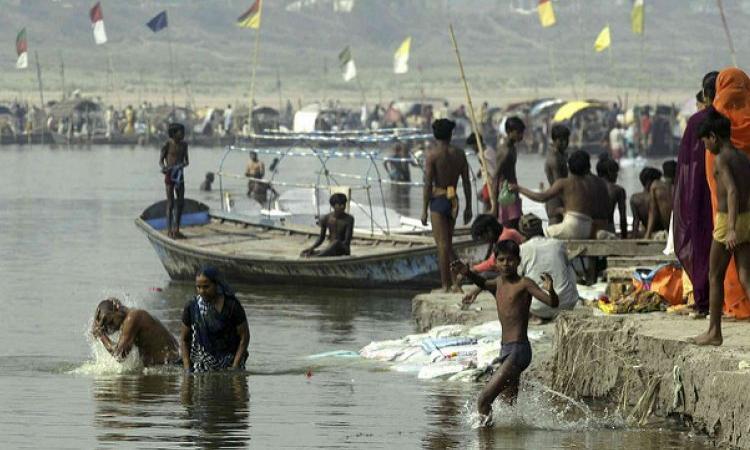
Not just surface water, pollution leads to deficit in dissolved oxygen in Ganga's riverbed sediment: Study
A study conducted by the researchers at the Institute of Science, Banaras Hindu University, Varanasi has found that the excess pollution in the Ganga river is not only polluting the water but also causing a deficit of dissolved oxygen in the riverbeds in some of the most polluted stretches of the Ganga river. The study was conducted during the summer months of 2016 to 2018 and was done along the stretch of the river between Varanasi and Kanpur and downstream to two major drains--Wazidpur in Kanpur and Assi in Varanasi. As per the study, the dissolved oxygen at the interface of sediment and water at the study points was lowest which suggests that the sediment oxygen demand is a major contributor to the low levels of dissolved oxygen in these regions.
Nearly 50 percent of the country is under drought
According to a study conducted by IIT Gandhinagar, nearly 50 percent of India is currently facing drought with at least 16 percent falling in the 'exceptional' or 'extreme' category. The study has been conducted using the real-time monitoring system that collects weather and precipitation data from the India Meteorological Department (IMD) which is then used to simulate soil moisture and other factors that contribute to drought. The study highlighted that the states which had a rain deficit this year might reel into water crisis if they experience very hot summer before the onset of monsoon. Moreover, the continuing drought will further burden the already depleting groundwater resources of the country.
Declining native vegetation in the Kali river basin is linked to water stress in the region: Study
As per the study conducted by the team of ecologists at the Indian Institute of Science (IISc), Bengaluru, the declining native vegetation in the Kali river basin in the Western Ghats is affecting the region's water sustainability. The study shows that stream in the river sub-catchment areas turn perennial when at least 55 percent or more of the river catchment is covered with native vegetation whereas streams turn seasonal in case the catchment area is degraded. The study also highlights the adverse impact of unplanned development projects and large-scale forest fragmentation on the catchment integrity.
Delhi government takes the initiative to bring an end to manual scavenging
To bring an end to manual scavenging, Delhi chief minister Arvind Kejriwal has flagged off 200 sewer cleaning machines that will be provided to skilled manual scavengers making them ‘sani-entrepreneurs’. The small sewer cleaning vehicles have been fitted with machines that are developed using Delhi Jal Board's technology. The vehicles can ensure hydraulic, jetting, grabbing and roding work and also clean the sewerage and bring the silt, slug and other waste out to a trolley. They will also ensure cleaning of sewage in narrow lanes in the city.
Karnataka: 156 out of 176 taluks reeling under severe water crisis
Out of 176 taluks in the state, nearly 156 of them are reeling under severe water crisis owing to deficient rainfall during kharif and rabi seasons in 2018–19. The authorities have estimated that the loss due to natural calamities, including floods/landslips and drought during both kharif and rabi seasons are worth Rs 32,335 crore. The state government has urged the Centre to immediately release funds as stipulated under the National Disaster Response Fund (NDRF) to the state. Meanwhile, the state has provided drinking water to over 370 villages through tankers and to 401 villages through hired private borewells.
This is a roundup of important news published between February 28 - March 5, 2019. Also read policy matters this week.